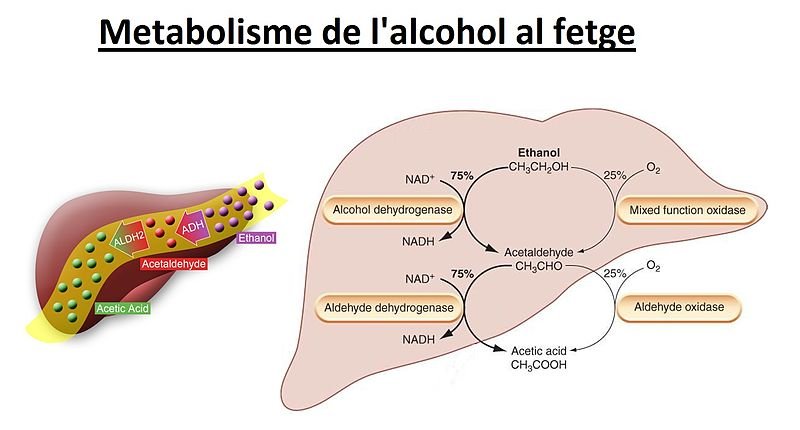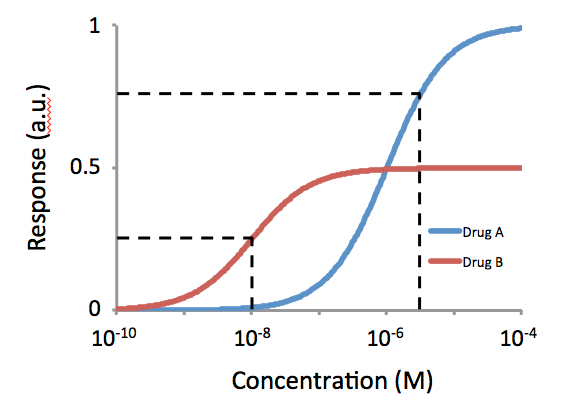The Massachusetts institute of technology, USA have in no doubt shown over the years their ingenuity in developing highly advanced technology in almost all spheres of human life. Advanced technological device usage is fast penetrating the health sector. Today several test and point on care testing kits have been greatly improved through the use of high-tech devices.
Most laboratory test can now be done even by the patient or a not so experienced health worker just by using these simple devices. Take for example the glucometer which measures the blood glucose level. The advent of technology in health have really changed the landscape of health delivery and have also made it easier for the physician or health care provider to effectively and efficiently render standard health care services to the patients.
As technology is advancing, the more new things are invented. Today, a new device that will solve a whole lot of problems especially when it comes to neurological issue associated with old age. This is a very promising technology and will replace the normal implantable pill that runs on battery.
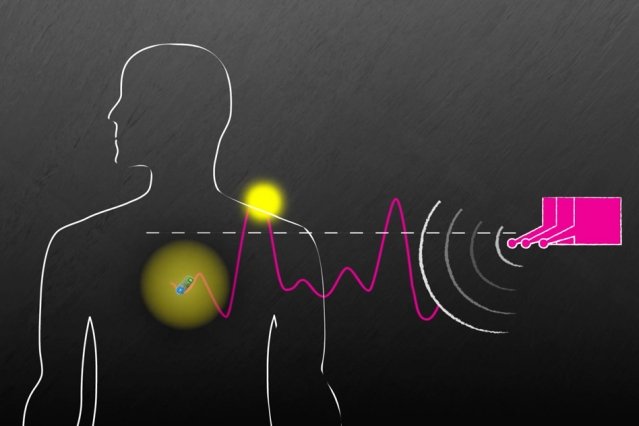
Imagine having the ability to self stimulate drugs release all by yourself using a wireless device that triggers implanted drug pill in our body anywhere and anytime. I will rather not let the cat out of the bag so soon, read along because a lot are in stock here for you!
Jumping into the full topic of discussion without proper knowledge and full understanding of the concept of drug actions might be a limiting factor to your understanding of the major reason for innovation in the strategies employed in delivering drugs into patients suffering from any disease condition. Let's quickly and briefly study these drugs, their administration, the first by-pass mechanisms, drug receptors, and site of action.
The paracelsus principle and drug actions
Let me briefly educate you on the mechanism of drugs actions and why drugs are specific in action, why they are able to treat that specific problem you complain about.
I was asked this question below a few months ago by a friend in school. The question goes thus
How is it that drugs are able locate that particular side of our body where we have problem, How do they work ?
The question was thrown at me by a very anxious guy who was really willing to understand how these drugs work. When I looked at his face, the eagerness was just too obvious . In order to give him satisfactory answer, I explained every nitty-gritty about drugs and their general mechanisms of action.
Let me start by saying that drug are chemical substances that act by first binding to their specific receptor. These drugs are used in the treatment of disease and illnesses.
If you observe, the word specific receptor was in bold. Receptors are responsible for the selectivity of drug action but at an appropriate dose. Before a drug can work in human body, it must bind to receptor that is specific to it. Without binding, there is no biological response to them.
All things are poisons, for there is nothing without poisonous qualities. It is only the dose which makes a thing poison-paracelsus
What the above quote literally means is that, every drug we take is a poison, it is only dosage that makes the drug safe. Paracelsus deserves an accolade for this awesome and ingenious principle.
A modern rendition of the principle would obviously be
Metabolism of alcohol as a case study
As humans, we are all genetically different. The way our body handles a drug differs. Ever wondered why someone can drink ten bottles or more of beer yet does not feel the effect immediately while another person, on taking just three bottles begins to manifest signs of excessive alcohol consumption. It's not that the person that took the 10 bottles is too strong to be dealt with by the excess alcohol he took, rather, the reason is simple, his liver rate of catabolism of alcohol is extremely fast.
When you take alcohol, the enzyme alcohol dehydrogenase in the liver breaks it down to acetaldehyde. This intermediate product is further converted to a final product called acetate by another enzyme - acetaldehyde dehydrogenase. In a situation whereby any of these two enzymes, especially acetaldehyde dehydrogenase is deficient or it's activity has been overwhelmed by excessive alcohol intake. Acetaldehyde accumulates in the body thus causing negative side effects - one of which is the popularly known as hangover.
In some people, the enzymes are very fast in action while in some, it is very slow. The faster these enzymes are, the faster alcohol is cleared from the system and the more bottles you might be tempted to consume. On the other hand, the slower these enzymes are, the slower alcohol is cleared thus leading to the build up of acetaldehyde wish causes hangover. So please never buy into the idea that one can actually drink as many bottles of beer as one wishes without any effect. If the enzyme acetaldehyde dehydrogenase is inhibited, my dear you are seriously in big trouble because the aftermath won't be funny at all.
Drugs like disulfiram that is used in the treatment of chronic alcoholism simply inhibits acetaldehyde dehydrogenase thus acetaldehyde accumulates and this causes the unwanted side effects observed in the patient.
It is only an advantage to anyone that can consume 10 or more bottles of alcohol. The study of this different genetic ability to metabolize chemical substances like drugs is known as pharmacogenomics and this is usually put into consideration before drugs are manufactured.
The goal of the physician
There are several medical conditions that are easily treated without much brainstorming and hectic procedures while there are some that require meticulous and highly advanced technical protocol that must be duely followed. Part of the major challenge faced by health care providers in treatment of patients with several disease condition is administration of drugs that will effectively cure diseases.
In treatment of diseases, the overall goal of the physician is to achieve 100% cure of a disease condition. How do they all try to achieve this? They look for means or ways through which the drug they administer will have full effect on the target site without been degraded. Though some drugs requires biotransformation into active metabolites in the liver before they can be efficacious
The first by-pass mechanism
Ever wondered why some drugs are given as injection, some taken orally, some taken without food Some taken anally, and some on the skin? Several routes through which drugs are administered to patients exist - the systemic and local routes. The systemic here simply means that the drug will reach its target organ, cell or tissue through the general blood circulation.
Examples of the systemic routes include most of the injections we receive which are also known as the parenteral routes, for example, the intramuscular, intravenous, intradermal, subcutaneous injections. Other systemic routes include Oral, sublingual (drugs placed under the tongue), rectal (drugs placed in the rectum or anus), Cutaneous (drugs applied over the skin),
inhalational and Nasal routes. One of the general advantages that these routes have with the exception of oral route is that they by-pass the liver.
The liver is one organ in the body that is so endowed with a lot of metabolic enzymes that degrade or catabolize a lot of food and drugs. The notable enzyme in the liver is Cytochrome P450. Ever wondered how the body deals with those toxic or poisonous substances we mistakenly ingest? The liver does the job! It is the heat generating centre of the body and it's functions in the body matters a lot especially when it comes to detoxification.
Almost all drugs we take orally through the mouth are metabolised in the liver. When these drugs are metabolised in the liver, their bioavailability (the fraction of ingested drug that reaches the systemic circulation) reduces because they will undergo catabolism in the liver. The first catabolism of drugs as they pass through the liver is known as the first by-pass mechanism. The essence of by-passing the liver is to ensure that the bioavailability of the drug is 100% so as to have a maximum effect in the patient.
Drugs administered through intravenous routes have a 100% bioavailability and they go directly to their specific site of action or target organ. So when that doctor gives you a shot of anaesthetic injection (drugs that causes loss of sensation and makes you feel unconscious) and you in no time dose off, don't be surprised, the drug acted on its target site receptor without delay.
Now this brings us to the concept of drug receptor complex. How do drugs interact with our body.
The drug-receptor theory
All drugs administered through any means have specific site and receptors where they act in the body. Just like I stated initially above, the receptors in the body are responsible for the selectivity of drug action. So if you take a pain killer drug, it is expected that the drug binds to all the pain receptors (nociceptors) in the body and consequently stop or inhibit the pain.
Drug-receptor interaction acts like a lock and key system . Drug is the key while the receptor is the lock. Only the drugs that suitably fits into its receptors effectively binds. A receptor has an active and and an inactive domain. When drugs acting as agonist binds to the active domain, a conformational change in the structure of the domain occurs thus eliciting a positive desired effect.
On the other hand, if the drug is an antagonist, it binds to the inactive domain, this leads to inactivity of the drug thus no inhibiting any effect. The whole explanation boils down to the fact that drugs do not actually activate or inactivate the receptor rather it binds to the active/inactive phase of the receptor.
The magnitude of drug effect a drug has on the the body depends on the concentration of the drug at the receptor site and this also in turn depends on the dose of the drug given as well as the pharmacokinetic profile. Take a closer look at the graph here which is the graded dose response curve for a drug A and drug B.
As the concentration of the drug increases, the magnitude of its pharmacological effect also increases and a point is reached where further increase in the drug concentration results to unresponsiveness of the drug receptor which is seen as a plateau from the graph. This is called tachyphylaxis, a mechanism the body adopts to prevent damage and excessive stimulation of the receptors in the body. The concentration of the drugs that will produce 50% of total maximum effect of the drug is referred to as the Ec50.
When it comes to drug action there are majorly two basic things we can depict from the graph above and they include Potency and Efficacy. Potency here is the dose of the drug that is required to produce an effect of a given magnitude. When the Ec50 of a drug is gotten at a lesser time, then it means that the drug is potent. On the other hand, efficacy is the ability of a drug to elicit a response when it interacts with a receptor. Now that you understand the concept of drug, you would want to agree with me that drug B is more more potent than drug A.
Of the two parameters above, the most important one is the efficacy of a drug. A drug could be potent but not efficacious. If a drug cannot elicit a response or desired effect, then it is as good as not been functional. This is why some drugs have different doses. Some can be very small but are capable of producing high effect in the body while some, you may need to take up to 5 doses before you get a response.
Yep! That sums up all about drug actions and administration, now let's get down to the real business of the day- optogenetics and wireless stimulation of a drug pill that has been implanted in the body.
This is a new technology that was developed at the Massachussets Institute of Technology, USA. This drug pill is like the size of a grain of rice implanted in the human body. According to the researchers, since it does not use battery, they even intend to make it smaller than the size of rice grain so that less space will be occupied by this pill especially in the brain.
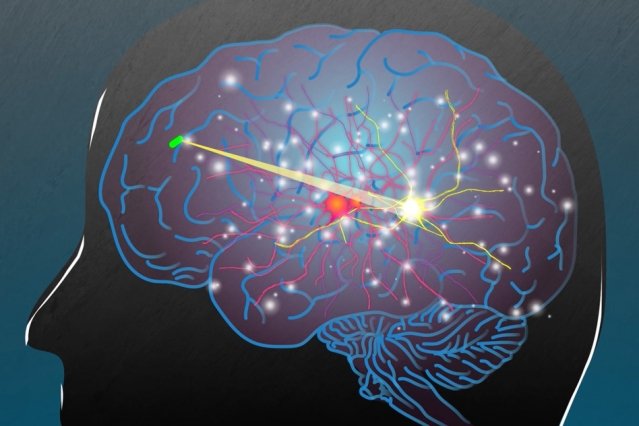 [image credits: MIT Researchers, MIT, USA, image used with express permission from MIT]
[image credits: MIT Researchers, MIT, USA, image used with express permission from MIT]The prototype has been tested on live animals and have shown to be effective in guinea pigs which were used in the research. Though it has not yet been used on humans, it is still undergoing full clinical trials.
How does this pill work without battery?
The mechanism is quite simple, the pill is implanted inside either the brain or any part of the body that is to be treated or monitored. The unique feature of this smart pill is that it does not run on battery. The question now is, how does it then function without running on battery?
They are powered using a radio frequency wave that can easily pass through the human body without causing any damage to any organ or tissue.
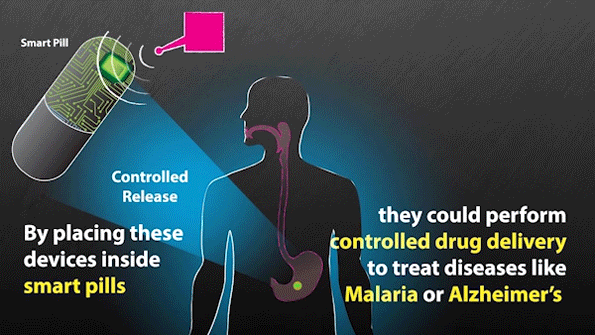 [image credits:MIT Researchers, MIT, USA, image used with express permission from MIT]
[image credits:MIT Researchers, MIT, USA, image used with express permission from MIT]As they are powered wirelesslly, the pill delivers a pre-specified dose of the drug where they are implanted. Though not all are designed to deliver drugs. Some are designed based on the use, some to monitor or detect several parameters, some to produce light that will control cells (optogenetics) but the major thing here is that it doesn't run on battery rather powered using radio frequency.
The future prospect I see concerning the use of this device
When these devices are into use on humans, they will make the work of the physician and health care provider less cumbersome. These devices will enable the physician to monitor various conditions of the organs in the body, it will also enable delivery of drugs, and tratement of disease like Alzheimer's, Parkinson's disease, or treat disease by stimulating the brain with light or electric current which it produces.
These wireless implant can stimulate the neurons in the brain so as to correct any brain damage or malfunction or as well inhibit neurons as the case maybe. Conditions that are usually associated with progressive neuronal degeneration will obviously be corrected using these wireless implants.
These device can even be used to also monitor various signs like blood pressure, heart beat, cardiac output and input etc. The movement of the gastrointestinal tract will be much more easily detected using these pills. These device will be very useful and Indispensable in optogenetics ( a science of using light to regulate and control cells in a living tissue or organ).
The possible shortcomings of this device
In as much as these wireless device has a lot of advantages, it is still not exempted from few shortcomings . Bearing in mind that the device works solely based wireless radio frequency signal it receives, a little challenge might come up when the is implant placed in deeper organs. As the strong radio frequency waves moves from the outermost part of the body to the inner part where the pill is implanted, it gradually falls. The final radio signal reaching the implant might not be able to adequately and efficiently power the device to deliver drugs or produce the light through optogenetics in the brain. In a nutshell, distance might be a hindrance to the use of these device in humans. Guess what, there is good news, these scientist have been able to develop what they called Invivo networking (IVN) system.
The IVN system relies on an array of antennas that emit radio waves of slightly different frequencies. As the radio waves travel, they overlap and combine in different ways. At certain points, where the high points of the waves overlap, they can provide enough energy to power an implanted sensor.MIT
It's very obvious that these scientist were really prepared to tackle the most challenging problems they were likely to face and it happens that this is one of them. But there is a limit to how far the implant can go in the body. Even though, you don't necessarily need to locate know the exact location of the smart pill since it is powered wirelessly, powering the smart pill is the major thing. Once the radio frequency is not enough to power the pill, there won't be drug release.
Should we as humans accept this technology?
Left for me alone, I would say an emphatic yes to the question. Reason been that it will help ameliorate the problem most especially affecting the brain. This technology will fully bring into lime light💡 the concept of optogenetics which has never been used on humans. Out aged ones won't have to worry about degerative brain damage that is associated with aging. Just by simple stimulation of these wireless device, that shaky hands, loss of cognitive ability will be restored. Those vital signs that might be very difficult to monitor will be definitely taken care of by these device.
Conclusion
Just in a way of summary, drugs are able to carry out their effector function in the body by binding to their specific receptors. Without binding, their won't be a biological response. Through wireless stimulation of drug implants, neurological disorder can easily be corrected.
This is a technology worth embracing! The final fate of this device usage on humans will be known come August, 2018.
Until next time 😉✌
Thanks for reading!

References and further reading
•MIT - wireless implantable pill
•wikipedia - drug interaction
•skepticalraptor
•healthmad- agonist Vs antagonist drugs
•basic principle of pharmacology
•pharmacokinetics of drugs
The screen shot of email of consent from Sarah McDonnell, MIT media relations manager to use image from MIT can be found here
If you write Science Technology Engineering and Mathematics related post, consider joining @steemstem and @stemng


